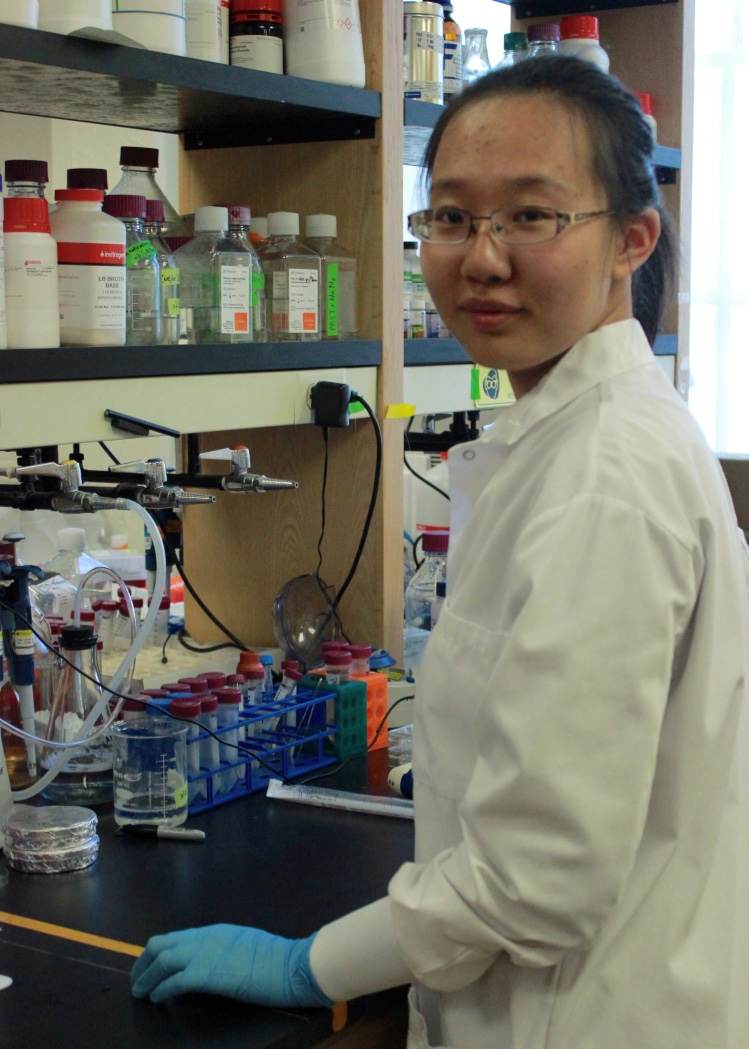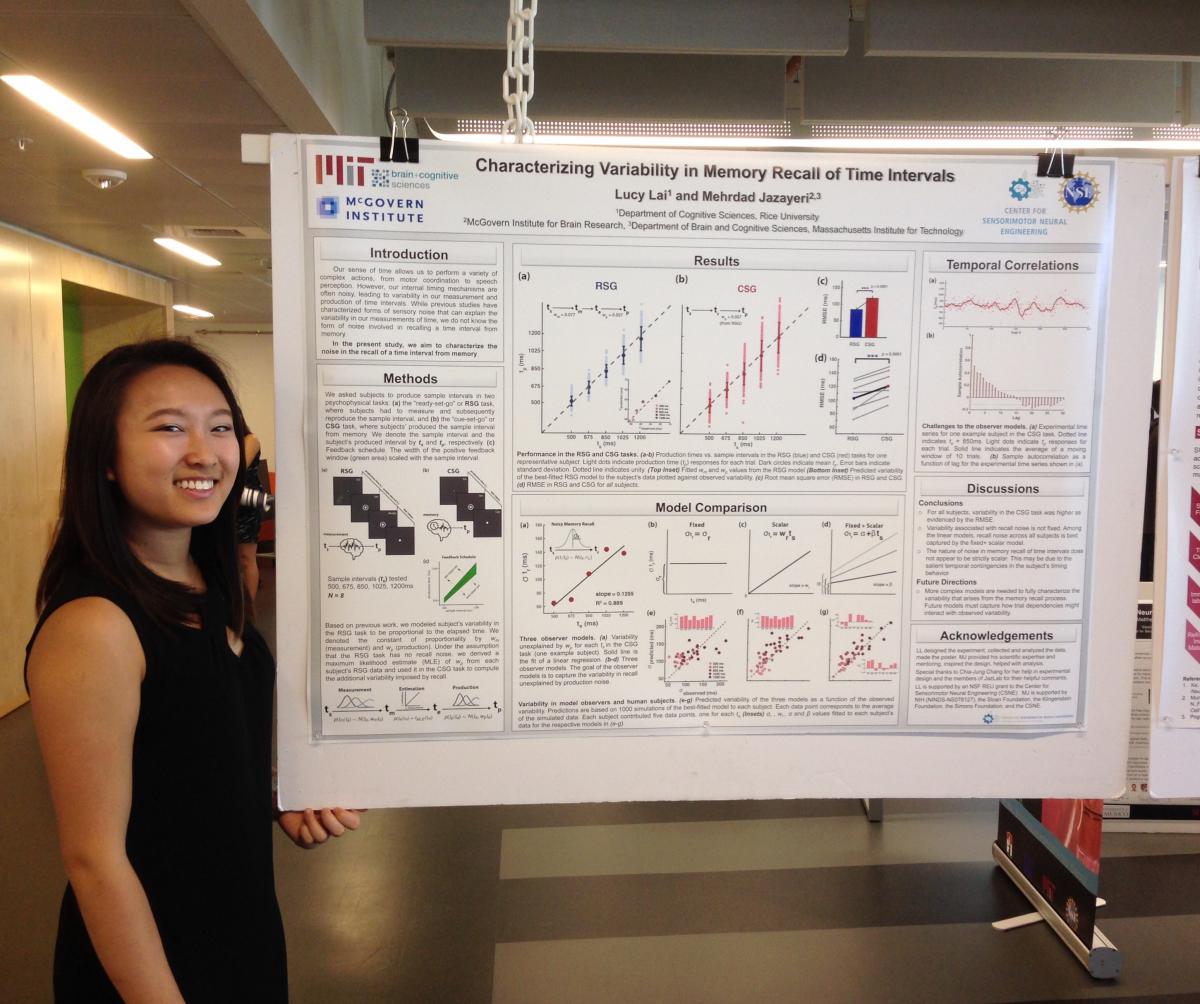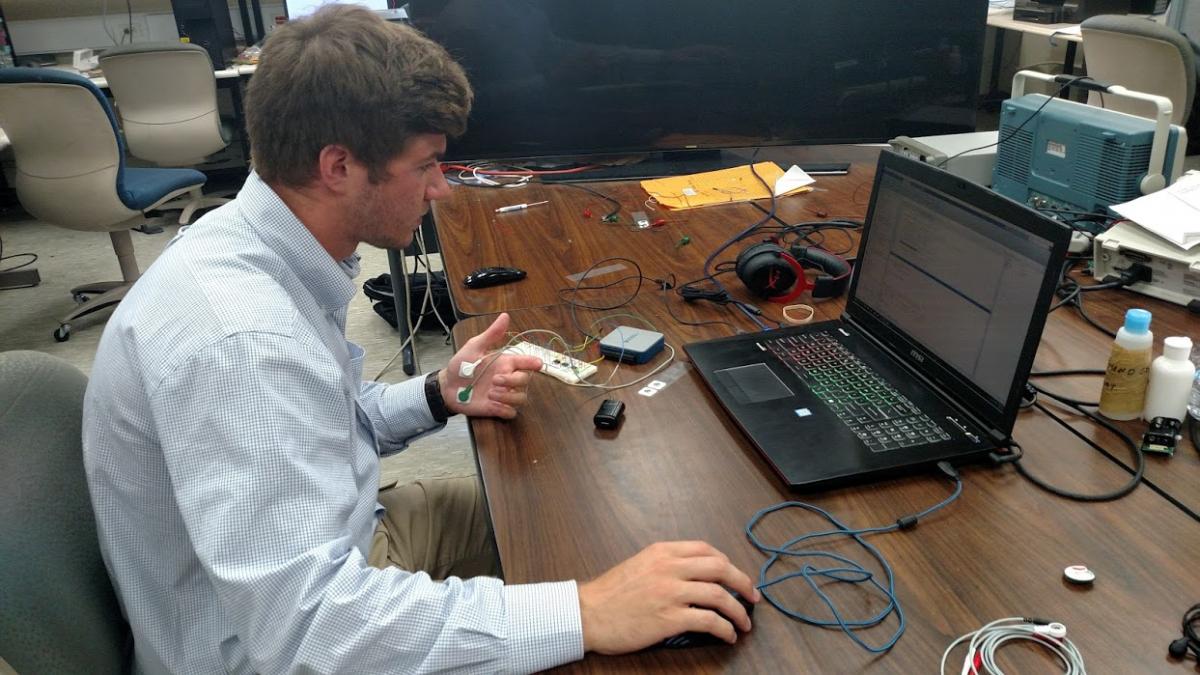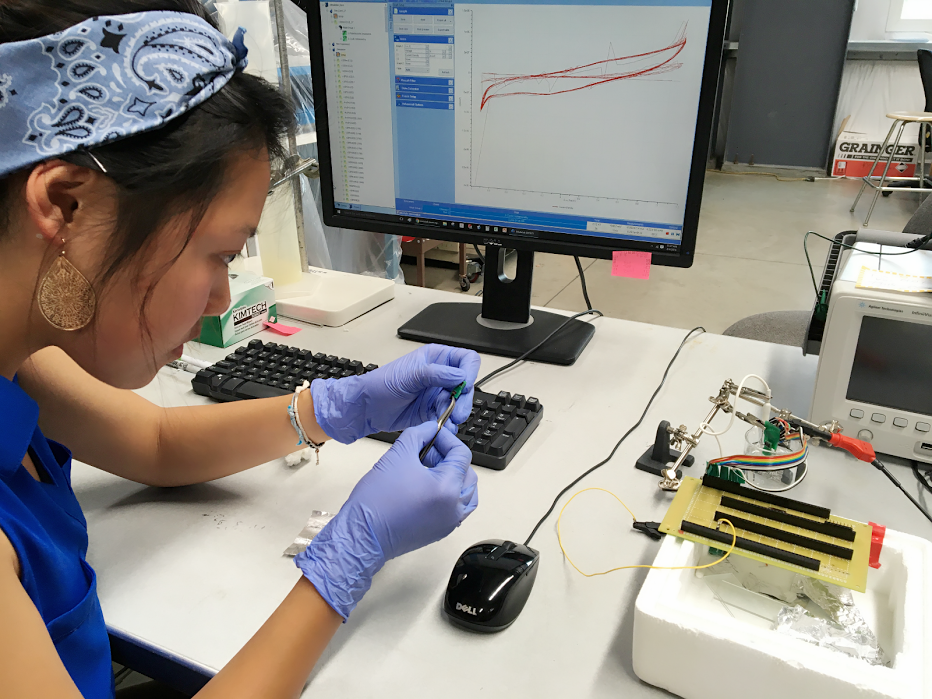Most students in the Center for Sensorimotor Neural Engineering’s (CSNE’s) Research Experience for Undergraduates (REU) program are studying and working in labs on the University of Washington campus this summer (learn about their experience here); however, there are students participating in the REU program on both the Massachusetts Institute for Technology (MIT) and San Diego State University (SDSU) campuses as well.
Read below about a few REU program participants’ experiences on the MIT and SDSU campuses, in their own words:
Yuyan Wang, Georgia Institute of Technology
 Because of my strong interest in neuroprosthetics and brain-machine interfaces, I immediately started my application to the CSNE summer program after receiving an email from my academic advisor at Georgia Tech. It was surreal when I first got the welcoming email from Dr. Anikeeva’s lab at MIT. Even after the ten weeks I have spent in the Bioelectronics Group I am still amazed by how challenging and fascinating it was working there.
Because of my strong interest in neuroprosthetics and brain-machine interfaces, I immediately started my application to the CSNE summer program after receiving an email from my academic advisor at Georgia Tech. It was surreal when I first got the welcoming email from Dr. Anikeeva’s lab at MIT. Even after the ten weeks I have spent in the Bioelectronics Group I am still amazed by how challenging and fascinating it was working there.
Dr. Anikeeva’s lab has made many advances on fiber-inspired, multifunctional neural probes as well as the development of magnetic nanoparticles to non-invasively interact with the nervous system. When developing devices that interface with the body, it is important to have comprehensive information on the tissue’s response to the implant. Over the summer I have been optimizing tissue-clearing techniques for 3D immunostaining and optical imaging to understand the foreign body response to implanted devices in the brain and adrenal gland. Working with a ten-week time schedule is intense, especially as tissue clearing is a time-consuming and complicated process; the procedure itself takes weeks and things can literally go wrong at any step. It was not until after many sleepless nights, frustration and fruitful discussions with various lab members that success finally arrived at the last minute. This protocol is now ready to be applied to different tissue imaging projects in the lab.
Lucy Lai, Rice University

As a student with a background in cognitive neuroscience, I was specifically searching for a summer research experience that would allow me to strengthen my quantitative skills and explore computational neuroscience. What appealed to me about the CSNE was its emphasis in using computation for understanding neural representation and processing. I was thrilled to be able to join Dr. Mehrdad Jazayeri’s lab for the summer, as his use of Bayesian inference in understanding sensorimotor function and timing behavior resonated with my desire to study and build models of complex behaviors.
Working in Dr. Jazayeri’s lab at MIT has been an incredibly fulfilling experience. Together, we developed a computational model to characterize the variability in memory recall of time intervals. As the ability to produce time-sensitive actions is important for many complex sensorimotor functions, it is very important to first understand how the brain computes and executes these actions. A heightened understanding of time-sensitive neural computation allows for better design and control of sensorimotor devices. My experience in the Jazayeri lab has give me a greater appreciation for the power and vast applicability of mathematical modeling. It has transformed my classroom knowledge of brain science into a curiosity to explore poorly understood neural systems.
Landan Mintch, Indiana University

I found out about the CSNE REU program from a professor who sent out a flyer she received from Dr. Lise Johnson, the education manager for the CSNE. My professor knew I had a serious interest in neural engineering and the fact that the program took place at the University of Washington was icing on the cake for me. However, during the application process I found out that the lab I thought would be the best fit for me was in fact at San Diego State University—and here I am!
I've been working on two projects in Dr. Yusuf Ozturk's lab at San Diego State University: a small wearable sensor for monitoring sympathetic nervous activity and also spatiotemporal multi-channel analysis of a large quantity of electrocorticography (ECoG) and electromyogram (EMG) data. Both of these projects have pushed me to the limits of my knowledge in matrix laboratory (MATLAB) and circuit design as well as the underlying mathematical and statistical theories which aren't covered in the normal engineering courses. The wearable sensor will be used as a power management peripheral for a wireless electroencephalogram (EEG) acquisition device by means of peak or energy threshold analysis. The analysis of the ECoG and EMG data will hopefully better correlate cross-channel translation with intercortical signals for a number of muscles in the right upper extremity of primates.
Sarah Wang, Harvey Mudd College

I am a junior at Harvey Mudd College studying engineering. While I enjoy a rigorous education at this small liberal arts college, I found myself yearning for research that could actually impact the people around me. Turning to my interests in neuroscience and biomedical device design, I discovered the CSNE’s REU program and immediately connected with its mission to help people with brain disorders by innovating human-computer interaction technologies. In particular, I was drawn to Dr. Kassegne’s work in neural micro electrode arrays for its union of neuroscience and mechanical engineering.
Working at Dr. Kassegne’s NeuroMEMs lab at San Diego State University has been fulfilling: I love that I am helping design a new generation of neural devices that will enable doctors to record and stimulate brain activity with superior resolution, ease, and safety. With ongoing collaborations with the University of Washington, University of Pisa (Italy), and University of Freiburg (Germany), where animal and human trials are conducted, I have no doubts that the work I have done this summer will impact the way doctors, scientists and engineers study the brain.
For more information about the CSNE and the REU program, contact Dr. Eric Chudler, CSNE Education Director.
